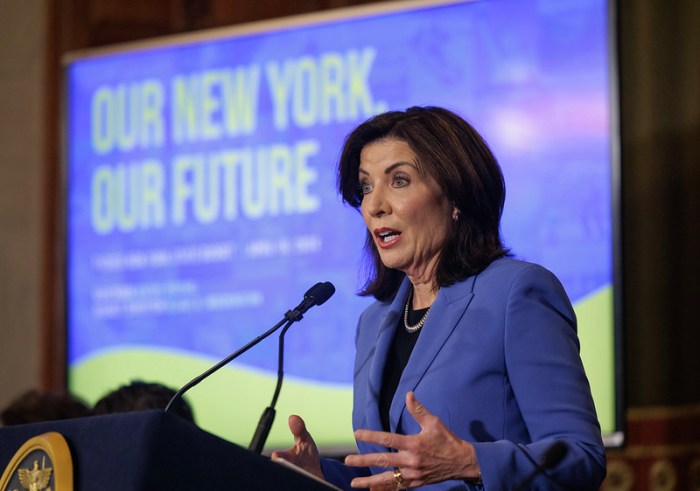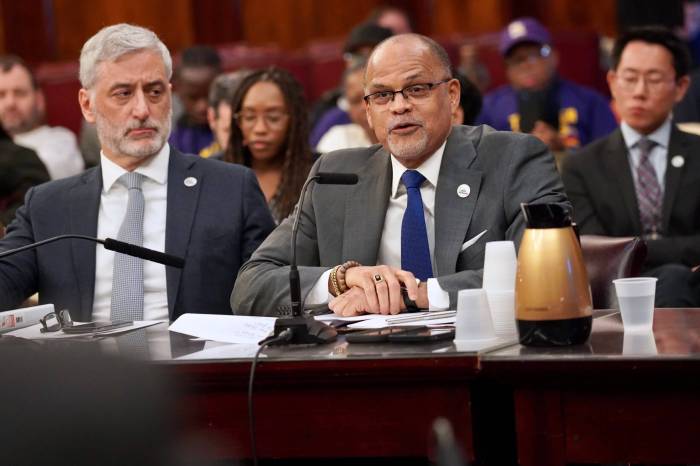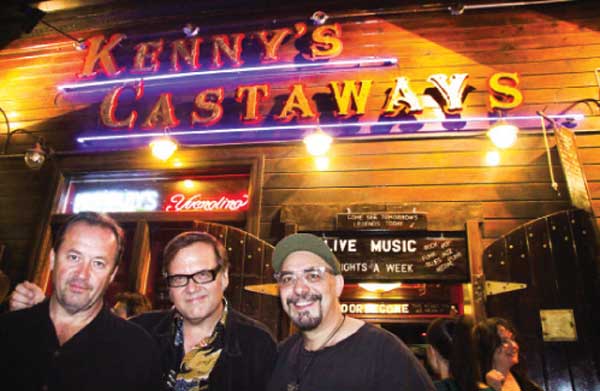
BY LINCOLN ANDERSON | Part of the once-legendary Bleecker St. music scene, Kenny’s Castaways shut its doors early Tuesday morning after a farewell concert by the Smithereens, who shot to fame in the mid-1980s after honing their act there. Fans of the club as well as longtime residents of the street called it the ending of an era.
Pat Kenny, an Irish immigrant, opened Kenny’s Castaways on Bleecker St. in the mid-1970s, relocating it from its former Uptown location, where it had been a supper club. Other rockers who performed there and went on to find stardom included Bruce Springsteen, the New York Dolls, Phish and Patti Smith.
It was rumored Springsteen might show up for the club’s closing night, but he wasn’t there.
Kenny also owned The Bitter End down the street for a while and was involved with the late Art D’Lugoff at the old Village Gate. Kenny also opened the Cat Club, where Don Hill was his right-hand man and where Billy Idol played. At one point, Kenny had a music club in Toronto called The Diamond.
After Pat Kenny’s death in 2002, his children Maria and Tommy Kenny continued to run Kenny’s Castaways, which has always offered original music.
Speaking early Tuesday morning, Maria said it was a combination of economics and a changing music scene that forced them to close. They have sold the building, which her father bought 16 years ago and in which Maria currently lives on a higher floor. She’ll be moving out.
The new owner has rented out the storefront space to an Italian bistro to be called Carroll Place, which will also feature some live music.
“We owned the building, but we have a very high mortgage and a lot of loans,” Maria Kenny said. “It’s a sign of the times — there’s a dwindling audience for original music on this street. Places like Poisson Rouge do well, but they have a lot of money behind them; they have big bands. Red Lion — it’s all cover bands. Back Fence — it’s all covers.”
A relative newcomer, Poisson Rouge opened across the street from Kenny’s Castaways several years ago in the former space of the legendary Village Gate.
Back Fence, located next to Kenny’s Castaways, could be the next to go; its lease will reportedly end about a year from now.
“Our focus was always a little different,” Maria Kenny said. “It was always about developing bands and giving people ‘fresh off the boat’ — somebody new to the city — a chance to play.
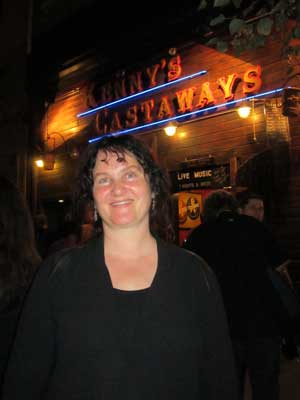
“There’s a lot of folklore to the Village scene,” she said. “To a lot of people, this was the first stop. It’s a lot in Williamsburg or the Lower East Side now, and they support the music there. I’ve had amazing bands here with only three people sitting in the audience. Three years ago I had Ben Harper here. I had Tom Morello of Rage Against the Machine. I had Big & Rich and I had Mike Gordon from Phish.”
Willie Nile, who opened for the Smithereens on Monday night, was one of those acts who was discovered at Kenny’s Castaways. He came to the city from Buffalo, and now lives on MacDougal St.
“Clive Davis and Lux Interior of the Cramps came to the club the same night and saw me,” he said. “Then I got a review here in The New York Times by Robert Palmer that compared me to Buddy Holly, Bruce Springsteen and Bob Dylan and that was it — I got signed after that.
“I learned how to perform on that stage,” Nile said. “It’s got soul — this is like a New Orleans soul that’s been here 40 years. Across the street was the Village Gate. It was a great scene and Pat Kenny was the godfather.
“I’m O.K. with being grouped as one of the castaways,” he said. “The wanderers, the lost souls, they made their way to this place — not for the fame, fame is bulls—, but for the character.”
But the only constant is change.
“You gotta be a Buddha — transition,” Niles reflected.
Inside the bar as Springsteen’s “Born to Run” blared, former regulars of the club, now sporting gray ponytails or white goatees, reminisced about Pat Kenny and his famed club as they nursed their final beers and drinks.
Al Rohde, who lives on Christopher St., said he used to do sound at the club for a young guitarist named Jack Soni who played there. One night Mark Knopfler of Dire Straits walked into the club.
“His brother had just quit the band,” Rohde recalled. “He said, ‘Hey, Jack, you want to go on a tour with me?’ — the ‘Money for Nothing’ tour. Jack thought about it for a few minutes and said, yeah.”
Rohde also used to work at the former Village Oldies record store on Sullivan St., a block west of Kenny’s Castaways. He recalled how the store used to blare punk music out onto the sidewalk, which was always packed, especially on weekends.
Jonathan Hunter, who used to go by John Alot, worked as a bartender back at Kenny’s Castaways during its heyday, and also at the Court Tavern, which was the Smithereens’ New Jersey club. Wearing a tightly tailored gray suit and skinny black tie, he still sports a classic ’80s new wave look.
“This was the last vestige of my youth,” he said of Kenny’s Castaways. “That’s how I put myself through college, working at places like this.”
He also worked with Tommy Kenny on carefully building all the bar’s woodwork, making it all look like it had actually been there 100 years ago.
“He’s an artist,” Hunter said, reverently.
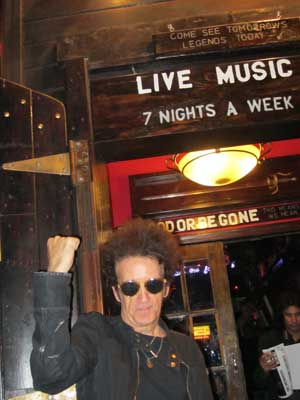
For 20 years, Bill Popp of Bill Popp and The Tapes held annual fundraisers at Kenny’s Castaways for the American Heart Association. He said he was deeply grateful to Pat Kenny for making the place available.
“Pat himself would put $200 in the bucket,” Popp said. “He really was just a nice human being. … My two favorite club owners were Pat Kenny and Hilly Kristal,” he said, referring to the late CBGB owner.
Music venues aren’t very discriminating anymore about the bands they let play there, Popp complained.
“Bar owners today, at least 80 percent of them, they don’t care what walks in the door — as long as they bring their friends,” he said. “If you don’t care what the music sounds like, why not have a topless bar?”
Maureen Remacle, president of the Sixth Precinct Community Council, was on hand for the club’s closing — but not because she was on the lookout for possible quality-of-life violations. She moved down to Bleecker St. in 1978 and Kenny’s Castaways, which had opened a few years earlier, was a part of her life.
“I went out with the bouncer for five years, so I was here all the time,” she recalled, standing on the sidewalk outside the place early Tuesday morning.
“Everyone in there has gray hair,” she reflected. “Everyone had kids and moved to New Jersey. I’m one of the last ones still here.”
Once the Back Fence closes, she said, “All we’ll have left is The Bitter End.”
Maria Kenny was irritated that two people, who she identified as Community Board 2 members who live nearby and had complained about noise from Kenny’s Castaways, had stopped in at the closing.










